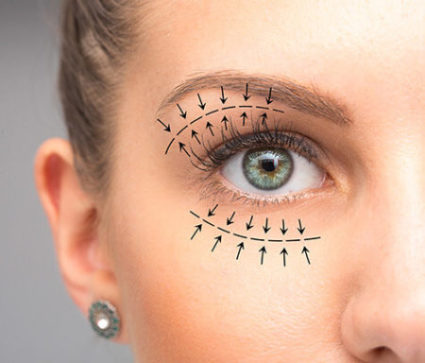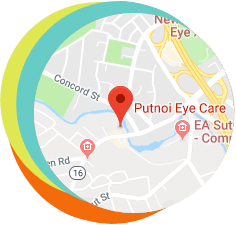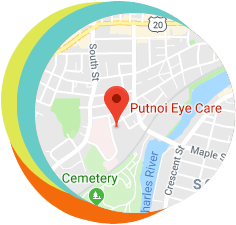Blepharoplasty Eyelid Surgery

Your eyes are the focal point of your face and reflect how you feel. Excessive skin weighing down your upper eyelids can make you look tired. It can also interfere with your vision by restricting your superior visual field and diminishing the amount of light getting into your eyes. Blepharoplasty surgery removes the excess folds of skin and pouches of fat that develop in the upper and lower eyelids. Blepharoplasty will subtly lift your eyelids so they are aesthetically pleasing and will restore a full field of vision.
Putnoi Eye Care offers various eyelid surgeries including:
- Upper and lower eyelid blepharoplasty (removal of excessive eyelid skin)
- Ptosis repair (when the eyelids are droopy and look “sleepy”)
- Entropion and ectropion repair (when the eyelids roll in or out)
- Chalazion removal (cyst on the eyelid)
- Removal of growths on the eyelids
- Other procedures
Ptosis Eyelid Surgery
Ptosis or “sleepy eyes” is due to a weakness of an eyelid muscle. Repair of this muscle lifts the eyelids and opens the eyes to improve vision. Many health insurance plans consider this procedure as medical and not cosmetic and will cover the procedure. Sometimes a person has ptosis and dermatochalasis (extra skin) and repair of both problems are done at the same time.
Entropion and Ectropion Repair
Entropion is due to a weakness of the lower eyelid muscles. In this case, the eyelid rolls inward and the lashes scratch the cornea causing tearing, pain, and decreased vision. Repair of this muscle repositions the lower eyelid so it functions appropriately. Ectropion is also due to weakness of the lower eyelid muscles. In this case the laxity in the eyelid prevents full closure of the eyelid. The cornea is then exposed which leads to tearing, pain, and decreased vision. Repositioning the lower eyelid alleviates the symptoms.
Chalazion Removal (cyst on the eyelid)
A chalazion is a blocked eyelid oil gland (meibomian gland) which has developed a cyst on the eyelid. Early treatment with warm compresses will sometimes promote drainage of the cyst. However, in many cases, if drainage has not occurred after 2 weeks of compresses, a pea-like cyst will develop in the eyelid and drainage is unlikely. A procedure can be done in the office under local anesthetic where the cyst is drained.
Removal of Eyelid Growths
The eyelid is prone to growths such as moles, skin tags, sebaceous cysts, ingrown eyelashes, and also cancers such as basal cell carcinoma, sebaceous cell carcinoma, squamous cell carcinoma and (rarely) melanoma. In most cases, growths can be removed in the office under local anesthesia.



